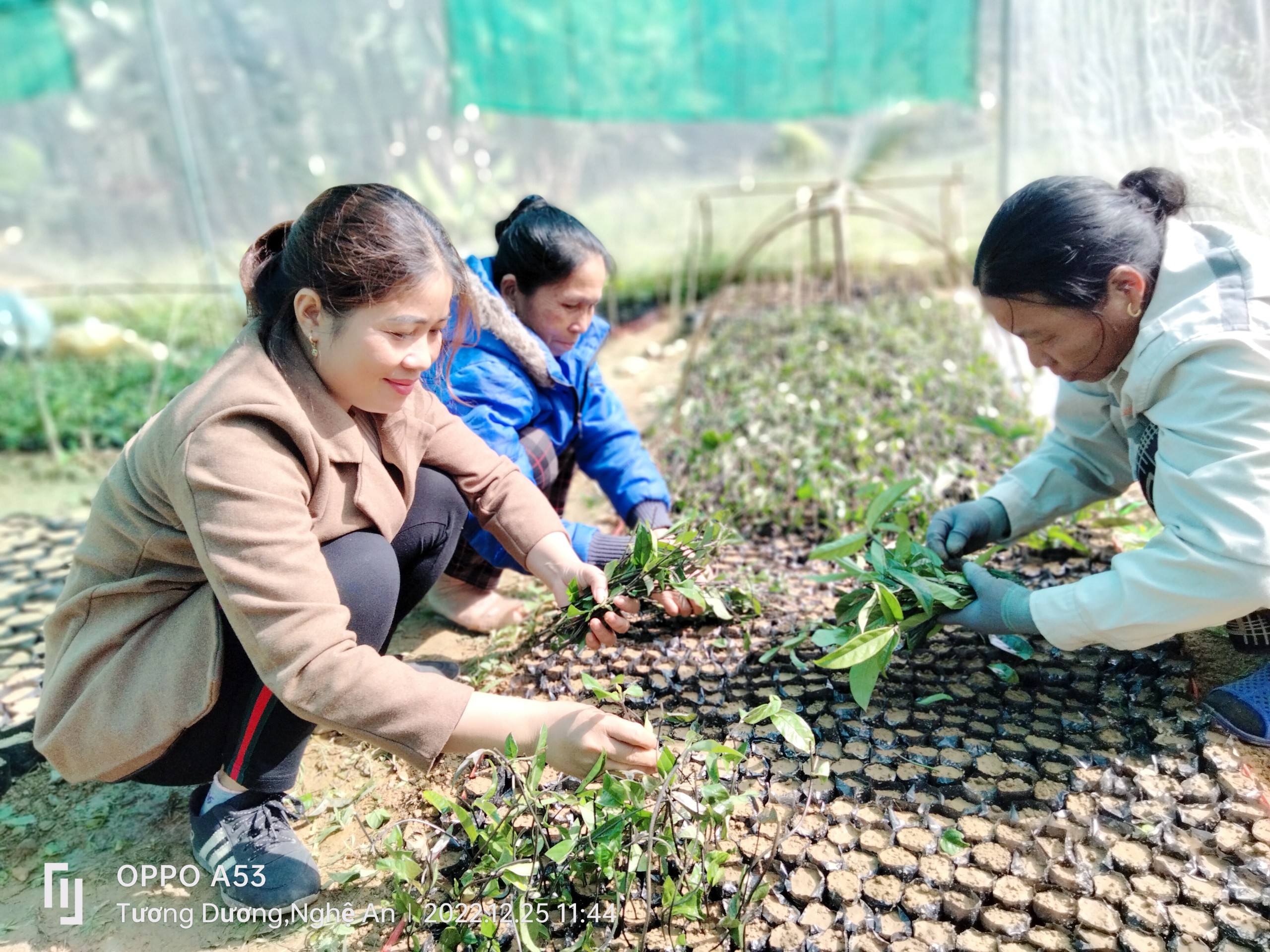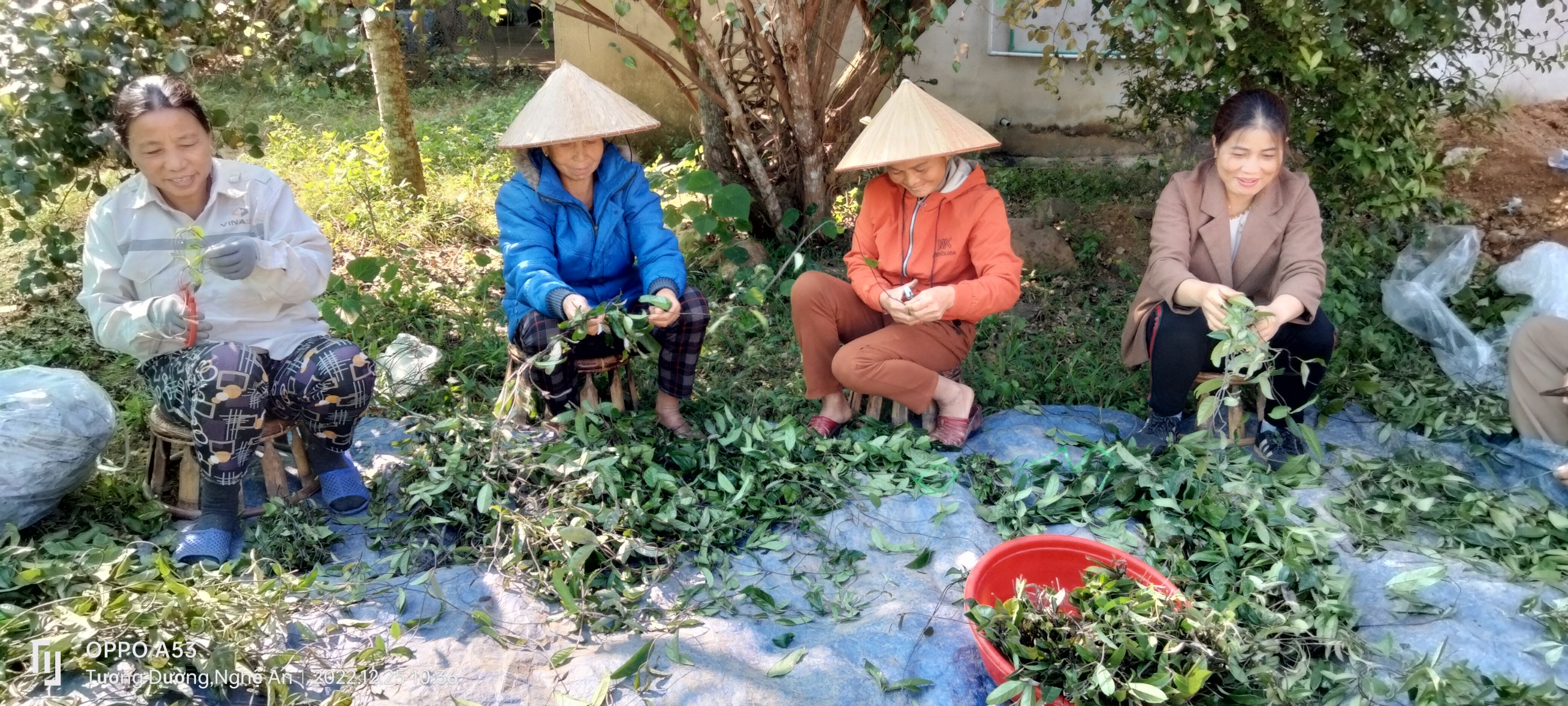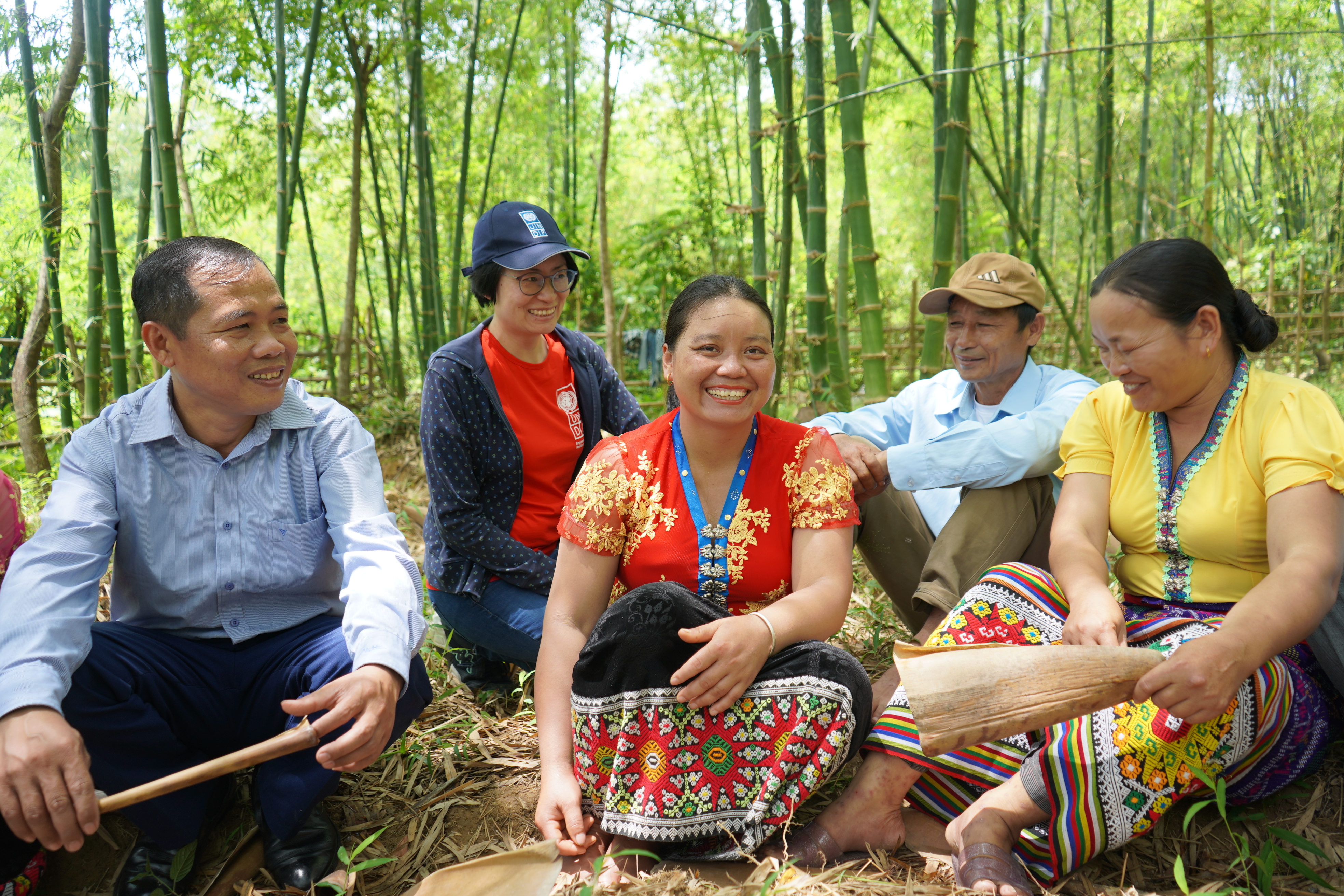Celebrating International Women's Day 2023
Under the forest canopy of Vietnam, women like Vi Thi Tuoi are working to redefine how medicinal herbs are cultivated and preserved.
Mrs. Tuoi is a member of a group of local ethnic minority women working at a medicinal plant nursery in a village in the Tuong Duong district of Nghe An province. Mrs. Tuoi explained how she had come to work for the nursery, one of two such nurseries cultivating medicinal plants as part of a project implemented by the Centre for Environment and Biological Resources in partnership with the Global Environment Facility’s Small Grants Programme.
 Vi Thi Tuoi (L), Lo Thi Thuong and Lo Thi O (ethnic minorities in Ngon village, Yen Hoa commune, Tuong Duong district, Nghe An). Photo: Le Vuong
Vi Thi Tuoi (L), Lo Thi Thuong and Lo Thi O (ethnic minorities in Ngon village, Yen Hoa commune, Tuong Duong district, Nghe An). Photo: Le Vuong
“During the first days of project design, we women were invited to participate in meetings many times. Both the women and men in the villages were asked what medicinal plants are present in the area, where they grow, when and how to harvest, how to preserve them and who to sell to,” she explained. Before the project, as a focal point in her community for collecting medicinal plants to sell to traders, Mrs. Tuoi began to notice the depletion of local indigenous medicinal plant species. With high economic and functional value, these plants were disappearing from the surrounding forests due to forest losses.
“Fortunately, the officials asked us instead of our husbands, since they might have given up – the men would not have beenable to answer, since it is us [women] that go to collect medicinal herbs in the forest,” recalled Mrs. Tuoi. Their recommendations about medicinal plants such as Ba Kich, Khoi Nhung (Ardisia silvestris), Bach Bo (Stemona tuberosa) and Che Hoa Vang (Camellia chrysantha) were acknowledged and duly incorporated into the project’s activities.
However, women still play a special role in the care work at the nursery. The activities here involve the essential participation of the local women's union. This is a typical example of the union's technical expertise work, which can even be linked to entrepreneurship opportunities for women from these nurseries. Once planted, these seedlings enhance the forest canopy, support communities living in the buffer zone, and also serve to boost income and conserve biodiversity in the Western Nghe An Biosphere Reserve.
 Despite the cold winds of the northeast monsoon, Vi Thi Tuoi (far right) and ethnic minority women from Ngon village determinedly and skilfully prune Ba Kich (Morinda officinalis) at the medicinal plant nursery in Xieng Lip village supported by the project. Photo: Le Vuong
Despite the cold winds of the northeast monsoon, Vi Thi Tuoi (far right) and ethnic minority women from Ngon village determinedly and skilfully prune Ba Kich (Morinda officinalis) at the medicinal plant nursery in Xieng Lip village supported by the project. Photo: Le Vuong
Members of the community are aware of project activities through village radio programmes, newsletters, in-person meetings and an information exchange platform for agricultural products. When asked about the challenges of growing medicinal plants under the forest canopy, Mrs. Tuoi noted that “the people were concerned about not knowing where to find medicinal plant varieties and not having enough money to buy fertilizers and protective fences, especially for poor households. Additionally, prices fluctuate dramatically depending on the amounts of outputs, with surpluses leading to reduced prices.”
Given their experiences collecting medicinal herbs and selling them to traders, Mrs. Tuoi and other local women proposed the establishment of the revolving fund as a buffer against price variability. In response, the project helped establish the revolving fund to promote the cultivation medicinal plants and connect the community directly with buyers. The revolving fund provides seedlings and loans to local community members so they can buy fertilizers and protective fences.
So far, Nghe An Traditional Medicine Association and some local companies have planned to purchase outputs of these native medicinal plants. Recognizing the value of protecting their forest canopy, the Tuong Duong Protection Forest Management Board, and the Management Board of Pu Huong Nature Reserve expanded their collaboration with the communities in the project area to include forest protection and forest patrolling to prevent illegal activity.
 Local community members, like the Western Nghe An community featured here, benefit from the revolving fund. This seed money helps get them started on growing medicinal plants suited to specific markets under the forest canopy. Photo: Phuong Dung/UNDP Việt Nam
Local community members, like the Western Nghe An community featured here, benefit from the revolving fund. This seed money helps get them started on growing medicinal plants suited to specific markets under the forest canopy. Photo: Phuong Dung/UNDP Việt Nam
These efforts complement and strengthen the broader GEF-funded “Mainstreaming Natural Resource Management and Biodiversity Conservation Objectives into Socio-Economic Development Planning and Management of Biosphere Reserve in Viet Nam” (BR) project, implemented by Viet Nam’s Ministry of Natural Resources and Environment and UNDP. Just like Mrs. Tuoi’s project, the BR project is working to mainstream biodiversity conservation and natural resource management to promote effective nature conservation work and support sustainable livelihoods in Western Nghe An, Dong Nai, and Cu Lao Cham - Hoi An Biosphere Reserves in Vietnam.
Through projects like this one, GEF SGP is supporting gender equality, breaking down stereotypes and building women up for people and planet. Read the full story here: We, the women




